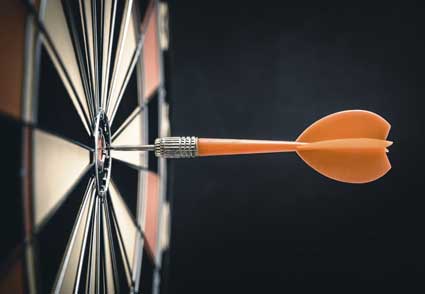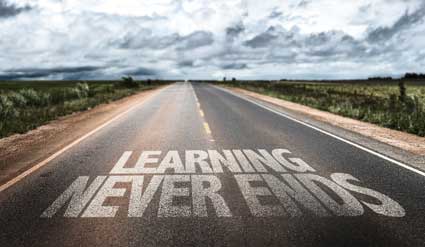Business Buyer and Market Behaviors
In this article, you will be learning about business markets and business buying behavior, which are somewhat similar.
The business market consists of companies that buy goods and services from one company in order to sell to others -- usually consumers. This market includes retail and wholesale companies that buy products to sell to others at a profit.
EXAMPLE!
Think of the largest sellers on eBay. They sell electronic products that they buy in bulk from a large manufacturer, and then resell those products to the consumer. By buying in bulk, they get the lowest possible price, and then resell to the consumer at a markup.
The business marketer must know the major players in the industry, and how they can influence them. They must know how to influence each participant in the business cycle, and know how to influence the buying process.
What is a Business Market?
A business market includes all the companies and organizations that purchase goods or services in order to produce other products or services. These other services can be sold, rented, or provided for other companies.
It also includes retail and wholesale companies that sell to consumers at a profit.
In this process, business buyers decide which products their company needs, and then they find and evaluate those products among all possible suppliers and brands. A company that sells to other businesses must understand the business buyer behavior to be successful.
The Characteristics of The Business Market
Again, business markets are very similar to consumer markets. Both markets have people who make purchases to satisfy their needs.
However, business markets also differ from consumer markets in many ways. Business markets have a different market structure, a different buying unit, and different reasons to buy a product.
How is a business market different from a consumer market?
Here are the main differences between the two markets:
The Market Structure and Demand
The business market involves far fewer buyers, but those buyers purchase much more product and have higher buying power. Business markets have what is called derived demand, which is when the demand is for consumer goods.
Some businesses have what is called inelastic demand, which is when the total demand is not affected by price changes. For instance, if the price of cotton goes down, clothing manufacturers will not buy more fabric unless that price drop will result in lower clothing prices, which will, in turn, increase the demand for the clothing.
Business markets also have more fluctuating demand than consumer markets. Business goods are more in demand and change much more frequently than consumer markets. An increase in the customer demand for a product can often cause a large increase in business demand, because the business market sees the consumer market going up, and therefore wants to have enough product on hand to meet that need.
Key Words!
Derived Demand
Inelastic Demand
Fluctuating Demand
EXAMPLE!
For example, Apple Computers sees that people are buying the mini iPad in record numbers. They want to keep up with the demand, as more sales results in more profits. Apple then goes to its main supplier, FoxConn, and tells them to build more iPads. FoxConn might be told to make twice the consumer demand, so that Apple is prepared for increased sales and do not have to turn anyone away.
The Type of Buying Unit
With consumer purchases, usually only one or two people make the decision to purchase a product. With business purchases, many more people are involved in the purchasing decision, and it requires more effort.
Business purchasing is often done by professional buyers who specialize in buying and making the best buying decisions. Some large companies may have committees who are made up of buyers, experts, and management to make decisions when making purchases. Those who specialize in procurement are often some of the highest paid employees in the company. This is why it's important for marketers to have good and close relationships with the buyers.
Types of Decisions in the Business Market
The business buyer will have more difficult and complex buying decisions than the consumer. Business purchases use much more money than consumer purchases, and there are considerably more economic factors at play. In addition, the business buyer often must take many steps and consult with several people before making a purchase. Because of this, business buyers usually take much longer to make buying decisions.
Additionally, the process for business buyers is more formal than for the consumer. When a consumer makes a purchase, even a large one, they typically make their purchase and then get a receipt. That's it; they are done.
For businesses, when they make purchases, it usually involves purchase orders and detailed product information. For very large companies and suppliers, they might even be a manual that details the buying process.
Lastly, in the business market, the buyer and seller are more dependent on each other than the same consumer relationship. Business orders are very large and involve a great amount of product. If a business relationship fizzles, it can cause a hardship for either company. In addition, a marketer that works with consumer markets rarely is involved with the actual consumer. However, with business marketers, they are often directly involved in the buying process.
THINK!
What are the main differences between the consumer market and the business market?
How would a marketer approach a business buyer differently than a consumer?
Business Buyer Behavior
In this section, we will discuss the four decisions a business buyer must take.
1. What purchasing decisions do business buyers make?
2. Who is involved in the purchasing process?
3. What influences the business buyer?
4. How do business buyers make their decisions?
As with consumer markets, marketers want to know how buyers will respond to certain buying situations. Typically, marketing will affect the business buyer and will produce a certain response. The rules of consumer buying are the same as business buying -- the 4 Ps:
-
Price
-
Place
-
Promotion
-
Product
Interested in learning more? Why not take an online Marketing course?
We learned about the consumer-buying environment. The business market is subject to similar issues with their environment, such as economic, technological, political and cultural. These issues affect the buyer. This can result in the choice of a product or service, the quantity and payment terms. A successful marketer designs a strategy that works with the company and results in increased purchasing.
Key Terms!
The 4 "Ps"
Price
Place
Promotion
Product
Within a business, there are two parts in the buying process.
1. The Buying Center – The People Who Make The Decisions
2. The Buying Decision Process
The Major Types of Buying Situations
There are three types of buying situations.
1. Straight Re-buy
2. Modified Re-buy
3. New-Task
Straight Re-buy
The straight re-buy is the most common type of buying situation. In this situation, the buyer reorders a product or service without any changes. This is a common transaction that is usually handled by a company's purchasing department. The supplying companies do their best to provide good customer service and product quality.
Modified Re-buy
In this type of purchase, the buyer might want to change the purchase order in some way. They might want to change the amount, price or terms. This process involves more decision makers, as there are variables that need to be changed. In this situation, the supplying companies might be nervous that they are losing a large account, and therefore do their best to keep it.
In cases of a modified re-buy, supplying companies might use the opportunity to improve business practices so they can keep existing business, while also gaining new business.
New-Task
In this type of purchase, the buyer is making a purchase for the first time. In these cases, there is greater risk, and therefore, a greater number of decision makers. This situation is the best situation for the marketer, as they have the ability to influence the buyer. This type of purchase requires the buyer to decide on the product, price, quantity, delivery and payment terms.
Key Terms!
Straight Re-buy
Modified Re-buy
New-Task
Participants in the Business Buying Process
The buying center is who makes the buying decisions in a company. Everyone who makes up the buying center has some input into to decision-making process.
The buying center consists of five roles of the business:
1. Users
2. Influencers
3. Buyers
4. Deciders
5. Gatekeepers
Users – As the name implies, the users are the people who use the product or service. These are often the people who originate the buying request.
Influencers – These are the people who decide what kind of product to buy, and do research to decide which specifications are needed and required.
Buyers – Again, as the name implies, these are the people who make the purchases. They choose the suppliers and the terms. In some cases the buyer helps identify required specifications, but normally they just negotiate and make the purchase.
Deciders – The deciders have the ability to say yes or no. They give the final approval to the buyer.
Gatekeeper – The gatekeeper controls the flow of information. They deal with all four of the above people to keep the buying center flowing.
Think!
Why do you think the gatekeeper has an important role in the buying center?
The buying center isn't a fixed number of employees. It will depend on the product or service needed, and who or what department needs it.
It is often difficult for the marketer to infiltrate the buying center, since they are not a part of the process. The marketer must learn who is in the buying center, and how they influence decisions.
Key Terms!
Users
Influencers
Buyers
Deciders
Gatekeepers
Major Influences on Business Buyers
What influences the business buyer?
Obviously there are many different influences when companies make a purchase. Many marketers believe economic factors are the main concern for companies, but this isn't always the case. Most businesses respond to a combination of economic and personal factors, since buyers and decision makers are human, as well. Businesses aren't always looking for the cheapest price.
Most B2B marketers are aware that emotion has a place in the buying process. If a company has several offers from suppliers, but one supplier gives a personal touch, the business will choose that supplier.
However, if the purchase is a large one that will affect a business's bottom line, the buyers care more about the economic factors.
How Do Business Buyers Make Their Decisions?
Major Influences on Business Buyers
Environmental Factors
Like consumers, business buyers are influenced by the factors in their environment. These factors include demand, economics, and exchange rates. If there is economic uncertainty, the business buyer might cut back on new purchases or investments, and try their best to reduce their inventories.
Organizational Factors
Each company has its own structure for its buying process. It's important the marketer knows this structure as well as possible. The marketer should know who is in the buying center, as well as how many people are involved in the buying process. The marketer must also know how the buying center decides on a purchase.
Interpersonal Factors
The interpersonal factors are the relationships between the members of the buying center. The marketer often has a difficult time understanding these relationships. If possible, the marketer should learn as much as they can about the buying center, and design strategies around it.
Individual Factors
These are the factors that each member of the buying center has. This involves individual personalities, age, income, education, and other aspects. Each buyer also has his or her own buying style. Marketers want to get as close as possible to each member of the buying center and form personal, individual relationships.
The Business Buying Process
There are eight stages to the buying process, which all new buyers face when making a purchase.
1. Recognizing the Problem
2. General Need Descriptions
3. Product Specification
4. Supplier Search
5. Proposal Solicitation
6. Supplier Selection
7. Order-Routine Specification
8. Performance Review
1. Problem Recognition
This is rather obvious, but identifying the problem is the first step. A member of a company decides they need a certain product to fix a problem.
2. General Need Descriptions
Once the need has been recognized, the buyer describes the need and why the company needs to make the purchase. For standard items like office supplies, this is easy. For more complicated items, or more expensive items, this is often more difficult.
3. Product Specification
This step is when the buying center decides on the product and its specifications. This step is also when the team tries to find the best value for their purchase. The team will rank the products by price and specifications, to determine which product is the best value.
4. Supplier Search
Again, this is fairly obvious. Once the product has been decided on, the buyer searches for a vendor. The buyer will make a list of suppliers that can meet their needs, and then order them by the best value. Finding suppliers is often made easier due to the Internet.
5. Proposal Solicitation
At this point in the buying process, the buyer asks suppliers to submit proposals, or submit their best bid. Large suppliers might just send a catalog, while smaller suppliers might provide a detailed proposal. The business marketer must be careful to send informative and detailed proposals, and their behavior will influence the buyer.
6. Supplier Selection
Once the buying center has received all the proposals, it is time to decide which supplier to choose. The buying center will often make a list of the most favored suppliers, and decide which of them provides the best value.
7. Order-Routine Specification
This step involves the buyer specifying the order. It will include the final order, which will detail the quantity, price, specifications and terms. It will also detail delivery times and terms.
8. Performance Review
In this last step, the buyer reviews the supplier, and decides whether to purchase from them again. Often times the supplier will reach out to the buyer to gauge customer satisfaction.
These eight steps would normally occur in a new-task order. Of course this process details a simple order; complex orders require much more time and details. Also, each company has their own way to make purchases, with buying centers as different as the people who make them up.



























